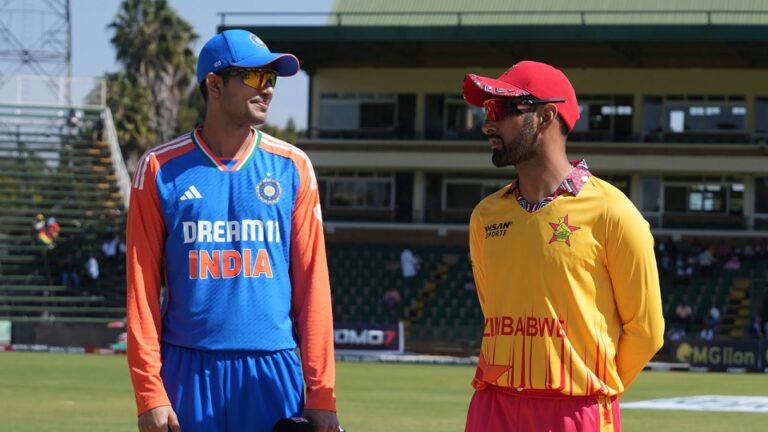
gaganyaan
India’s Gaganyaan mission is a monumental stride in the nation’s space program. Spearheaded by the Indian Space Research Organisation (ISRO), this ambitious human spaceflight endeavor aims to place India among the elite nations capable of sending humans into space. Let’s delve into the fascinating details of the mission, its objectives, and the broader implications for science and technology in India.
The Vision of Gaganyaan: Gaganyaan
What is Gaganyaan?
Gaganyaan, which translates to “Skycraft” in Sanskrit, is India’s first human spaceflight mission. The project was officially announced by Prime Minister Narendra Modi in 2018 during his Independence Day address. Its primary objective is to demonstrate the capability of sending a crew of astronauts into a 400 km orbit and bringing them back safely.
Key Objectives
- Technological Demonstration: Showcase India’s ability to develop and operate human-rated space systems.
- Inspiration for Science and Technology: Foster interest in STEM (Science, Technology, Engineering, and Mathematics) among the youth.
- Strategic Significance: Cement India’s status as a major spacefaring nation.
- Economic and Commercial Benefits: Open new avenues in space tourism and commercial space applications.
Gaganyaan: Mission Timeline
Phase 1: Preparatory Stage
ISRO began the groundwork for Gaganyaan in 2018. This phase focused on developing critical technologies such as the Human-Rated Launch Vehicle (HRLV), Crew Escape System, and Life Support Systems.
Phase 2: Unmanned Missions
Before sending humans to space, two unmanned missions are planned:
- G1 Mission: Scheduled for late 2024, it will test the launch vehicle, crew module, and system integrity.
- G2 Mission: This mission will focus on replicating the conditions of a manned flight to ensure readiness.
Phase 3: Manned Mission
The crewed mission, anticipated for late 2025 or early 2026, will involve a team of three astronauts embarking on a journey to low-Earth orbit for a duration of 3-7 days.
Gaganyaan’s Technological Marvels
Human-Rated Launch Vehicle (HRLV)
Gaganyaan will use an upgraded version of ISRO’s Geosynchronous Satellite Launch Vehicle Mark III (GSLV Mk III), renamed as the LVM3-M1. This vehicle is designed to ensure a safe and reliable launch with a human crew on board.
Crew Module
The crew module is the spacecraft that will house the astronauts. It is equipped with advanced life support systems, communication facilities, and safety mechanisms to sustain human life in space.
Crew Escape System
A critical feature of the Gaganyaan mission is its crew escape system, designed to pull the crew module away from the rocket in case of an emergency during launch.
Environmental Control and Life Support System (ECLSS)
The ECLSS ensures breathable air, optimal temperature, and humidity levels inside the crew module. It also manages waste and supplies water to the astronauts.
Astronaut Training and Selection
Who Will Fly?
ISRO has shortlisted a group of Indian Air Force (IAF) pilots for the mission. These candidates underwent rigorous physical, psychological, and technical evaluations.
Training Modules
The astronauts are undergoing training in collaboration with Russia’s Gagarin Research and Test Cosmonaut Training Center. Key areas of focus include:
- Survival training in extreme environments.
- Microgravity simulation.
- Spacecraft systems and operations.
- Emergency response techniques.
The Challenges Ahead
Technological Hurdles
Developing human-rated systems and ensuring fail-safe mechanisms are among the biggest challenges for ISRO.
Financial Considerations
The Gaganyaan mission has a budget of approximately ₹10,000 crore. While it is cost-effective compared to similar missions globally, ensuring cost management without compromising quality is crucial.
Meeting Deadlines
Space missions are prone to delays due to unforeseen technical issues. Balancing ambitious timelines with thorough testing is a delicate task.
The Global Context
Space Race 2.0
With Gaganyaan, India joins the ranks of countries like the United States, Russia, and China in the realm of human spaceflight. This move positions India strategically in the new-age space race, where emerging players like private companies and nations are vying for dominance.
Potential Collaborations
ISRO has sought technical support from countries like Russia and France, highlighting the collaborative nature of space exploration in today’s era.
Benefits of the Gaganyaan Mission
Scientific Advancements
The mission will push the boundaries of material science, robotics, and space medicine in India.
Boost to the Economy
The development of indigenous technologies can drive economic growth and create jobs in high-tech sectors.
National Pride and Inspiration
Gaganyaan will be a source of immense national pride, inspiring a generation of scientists and engineers.
Future Prospects
Beyond Gaganyaan
ISRO’s ambitions don’t stop at Gaganyaan. The organization plans to establish a space station and collaborate on interplanetary missions, including potential human exploration of the Moon and Mars.
Space Tourism and Commercial Ventures
Gaganyaan could pave the way for India’s entry into space tourism, making it more accessible and affordable compared to global competitors.
Conclusion
Gaganyaan represents India’s determination to chart new frontiers in space exploration. It is a testament to the country’s scientific prowess, strategic foresight, and unyielding ambition. As the mission unfolds, it will undoubtedly cement India’s position as a leader in the global space community while inspiring countless individuals to dream beyond the skies.



